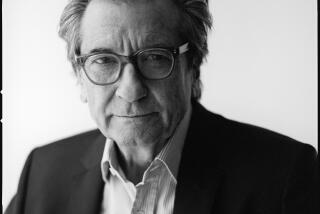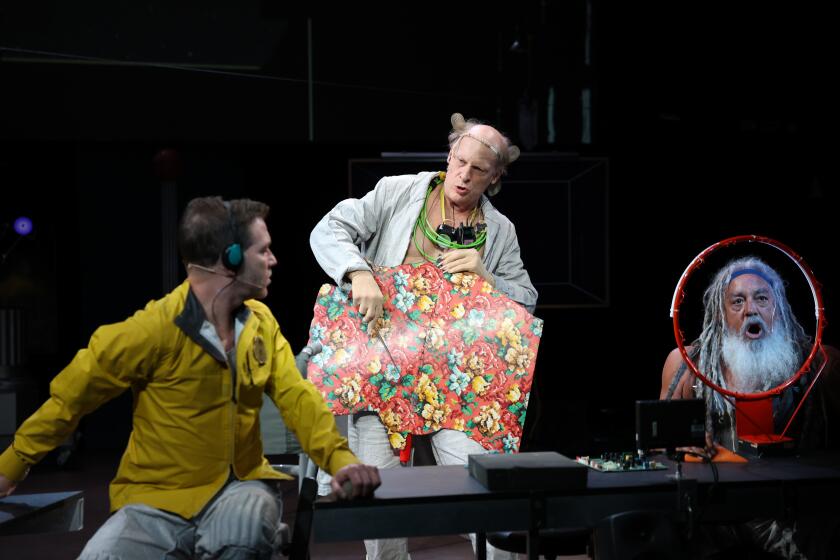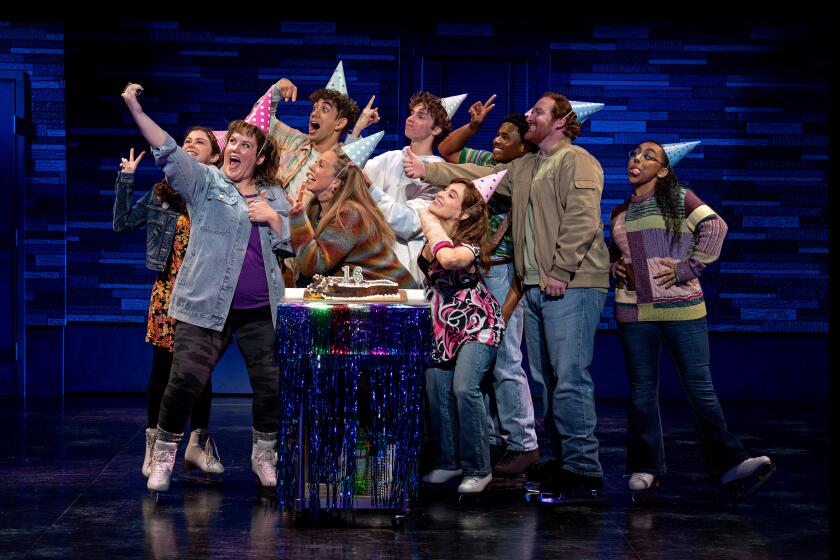Theater Reviews : Campy, Shabby, Pun-Filled ‘Nun’ Could Be More Fun
LONG BEACH — There’s summer camp, and then there’s summer camp.
Bruce Gilray’s and Richard Witter’s “. . . And Then There Was Nun,” at Long Beach Playhouse’s Studio Theatre, probably seems outrageous enough to an audience not terribly used to seeing a male actor playing Bette Davis, who in this farce’s universe is reputedly the head of the Whip-In-Hand Institute.
Outrageous, maybe. But “Nun” is actually very traditional--that is, in the Charles Busch-Charles Ludlum comedy tradition of crass and cross-dressed sniping and spoofing. The high heels fit everyone, darling, and we mean everyone.
Of course, the high heels might also be suitable murder instruments--and murder eventually becomes the real issue in “Nun.” A comedy with a cast of starry Hollywood characters--all members of the Sisters of St. Andreas--singing “weapons are a girl’s best friend” in throaty overkill isn’t too concerned if the furniture is mussed up with a few bloodstains.
Sister Alfred Hitchcock (Steven Jay Warner) informs us that this order of special nuns began when Rebecca was attacked by Norman Bates at the Hollywood sign. (Bring along your Leonard Maltin movie guide to catch all of the puns.) Just then, a quake knocked over the sign’s first “L,” spelling “Holywood.”
Puns spewed fast and furious are about all Act I amounts to. While Sister Vivien Leigh (Dani Ballew) tries to host and Hattie McDaniel (Keenan Zeno) tries to pick up after everybody, Sisters Bette Davis and Joan Crawford (David W. Morgan and Michael Treat Latsch) re-enact their own private version of the Civil War.
Sisters Tallulah Bankhead (Steve Simonson), Mae West (Mary Tuck), Marilyn Monroe (Camille Vernick) and Judy Garland (Kevin Dulude) toss their comments in occasionally while the Bette-Joan war rages. And everyone considers Elaine Melvold’s Gloria Swanson to be mad (lots of pre-Andrew Lloyd Webber “Sunset Boulevard” punning here).
But when murder most foul enters this sisterly retreat, it’s Sister Katharine Hepburn (Sigrid K. Zahner) who takes charge. Finally, after much belabored camp, “Nun” starts becoming a play that looks suspiciously like Agatha Christie’s “Ten Little Indians.” Everything else in this show is a reference or in-house joke; why not the plot?
Naturally, each star gets knocked off, and Gilray and Witter are so faithful to their inspiration that the killings duplicate Christie. But because these are stars, the victims always get one last word in before they keel over.
Some of the actors milk that last word dry. Morgan, Latsch and Zahner don’t provide the most complete impersonations (those are served up by Vernick’s Marilyn and Tuck’s Mae), but they know camp and how to take charge of the stage.
*
Zeno’s Hattie is the most crowd-pleasing comic, but there’s no irony to his bug-eyed approach when Hattie gets scared. Melvold puts her Gloria in an appropriate daze. The others are basically impersonations, with Warner’s Hitchcock the weakest of the bunch.
But what really deflates the full summer-camp appeal is director Hugh Harrison’s refusal to speed up the pace when the farce demands it; that, and an unfortunately cheap-looking design, care of Ed Gatica’s lights, Greg McCurley’s sound and nobody on set design.
Donna Fritsche as “costume coordinator” puts together some effective ensembles, but it’s not enough. As Laguna Playhouse’s recent production of Ludlum’s “The Mystery of Irma Vep” showed, you can milk the camp a lot more if you look great while doing it.
* “. . . And Then There Was Nun,” Long Beach Playhouse Studio Theatre, 5021 E. Anaheim St., Long Beach. Fridays-Saturdays, 8 p.m.; Ends Saturday. $10. (310) 494-1616. Running time: 2 hours, 10 minutes. Steven Jay Warner: Sister Alfred
Keenan Zeno: Sister Hattie
Dani Ballew: Sister Vivien
Michael Treat Latsch: Sister Joan
David W. Morgan: Sister Bette
Elaine Melvold: Sister Gloria
Steve Simonson: Sister Tallulah
Sigrid K. Zahner: Sister Katharine
Mary Tuck: Sister Mae
Camille Vernick: Sister Marilyn
Kevin Dulude: Sister Judy
A Long Beach Playhouse Studio Theatre production of Bruce Gilray’s and Richard Witter’s farce. Directed by Hugh Harrison. Lights: Ed Gatica. Sound: Greg McCurley. Costume coordinator: Donna Fritsche.
More to Read
The biggest entertainment stories
Get our big stories about Hollywood, film, television, music, arts, culture and more right in your inbox as soon as they publish.
You may occasionally receive promotional content from the Los Angeles Times.










